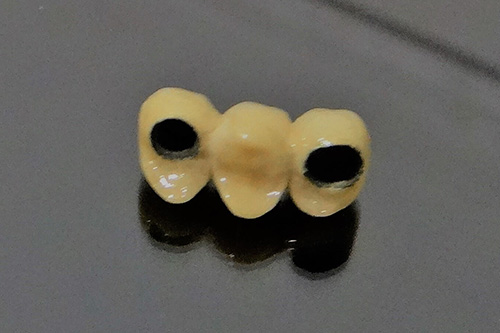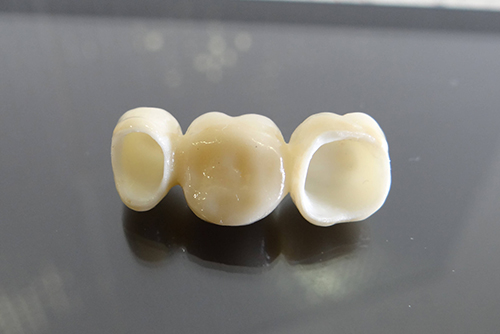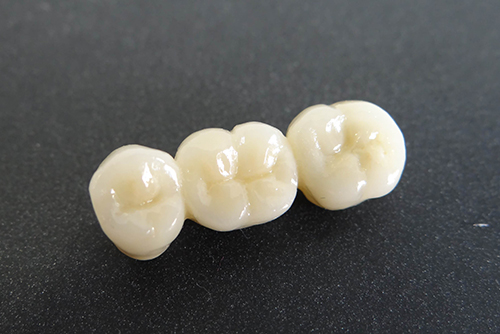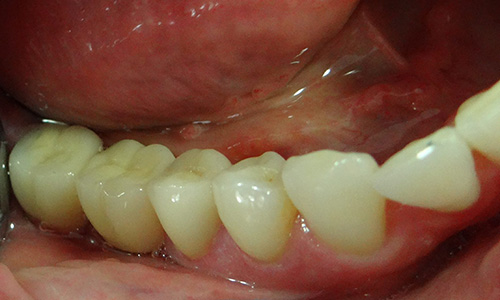DENTAL BRIDGES
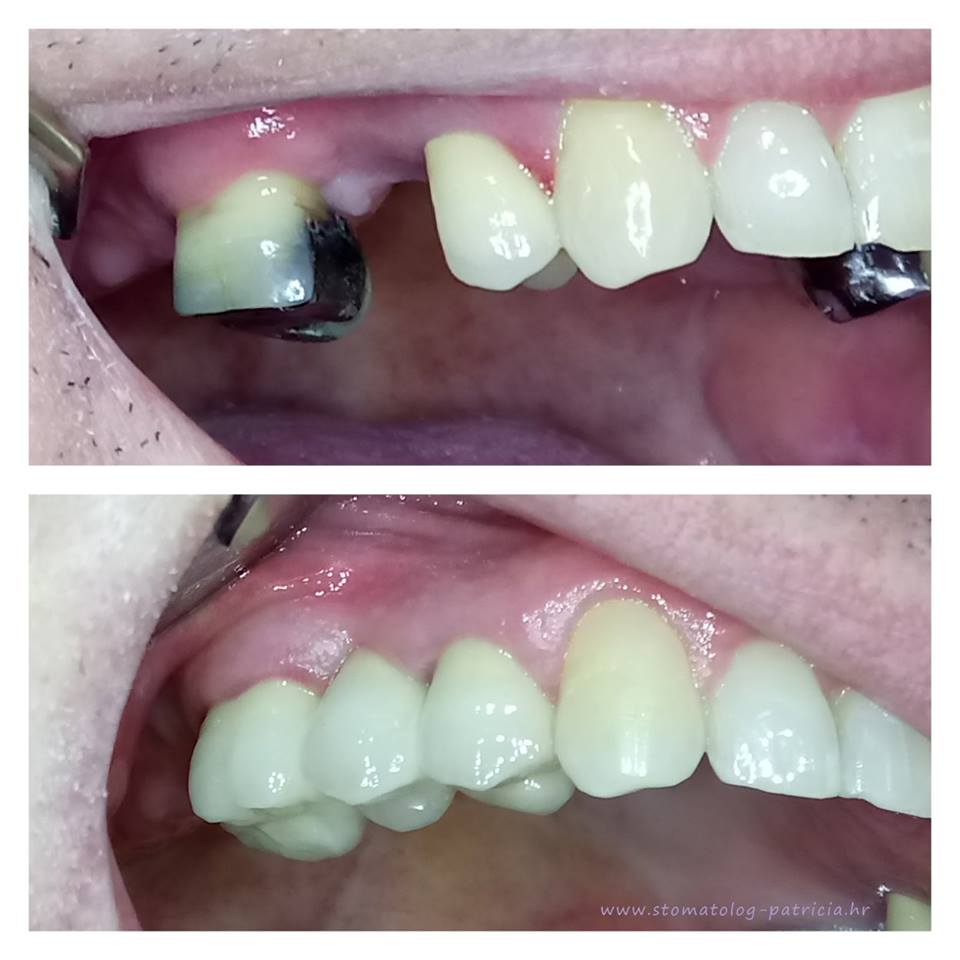
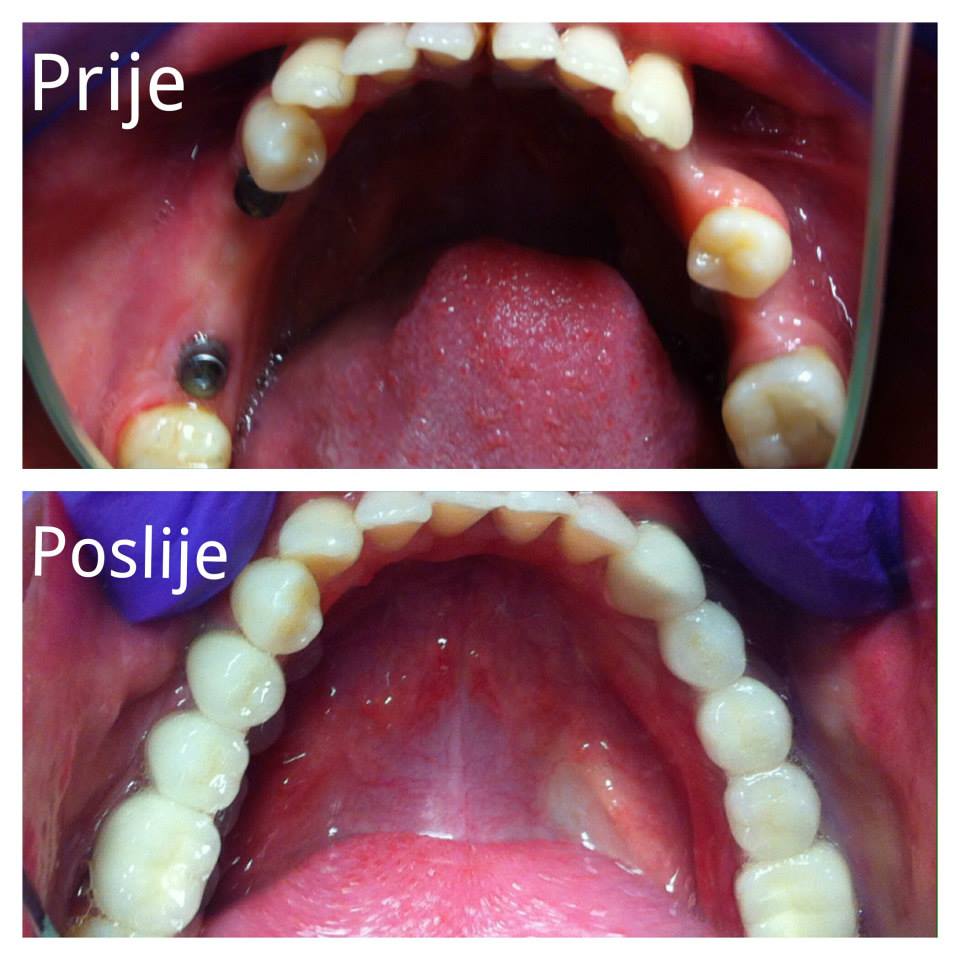
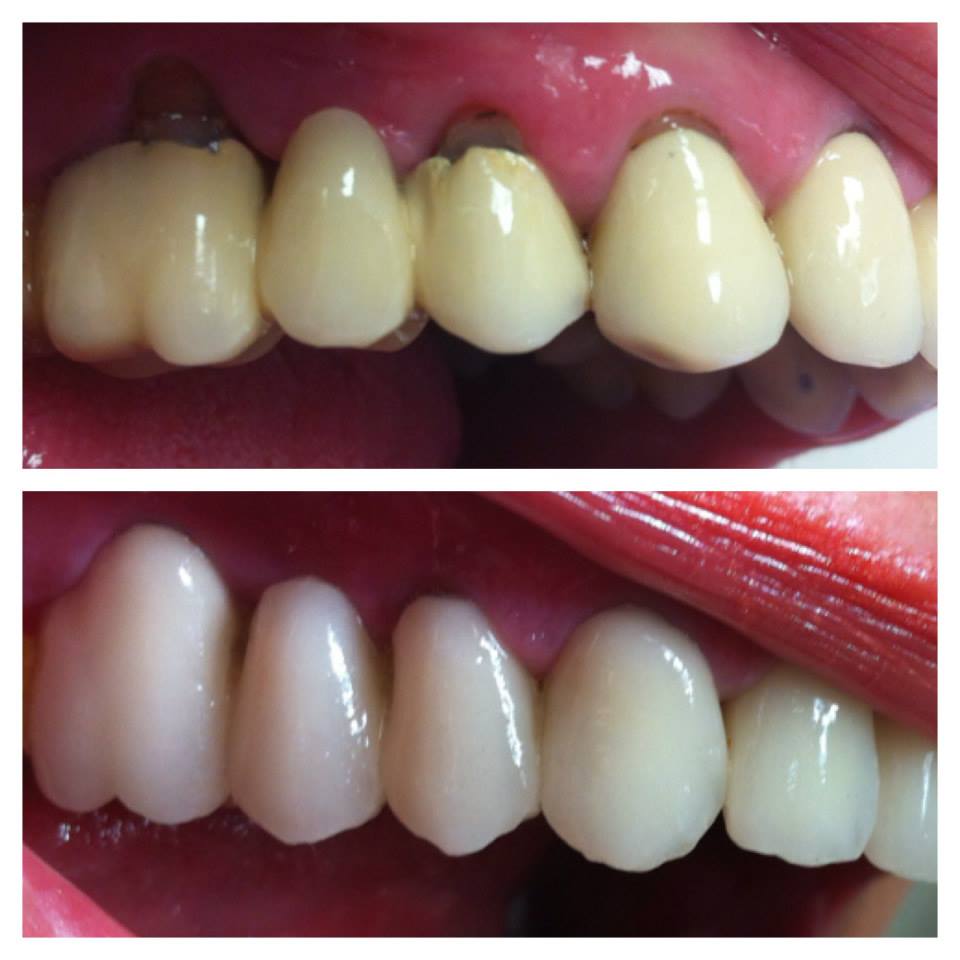
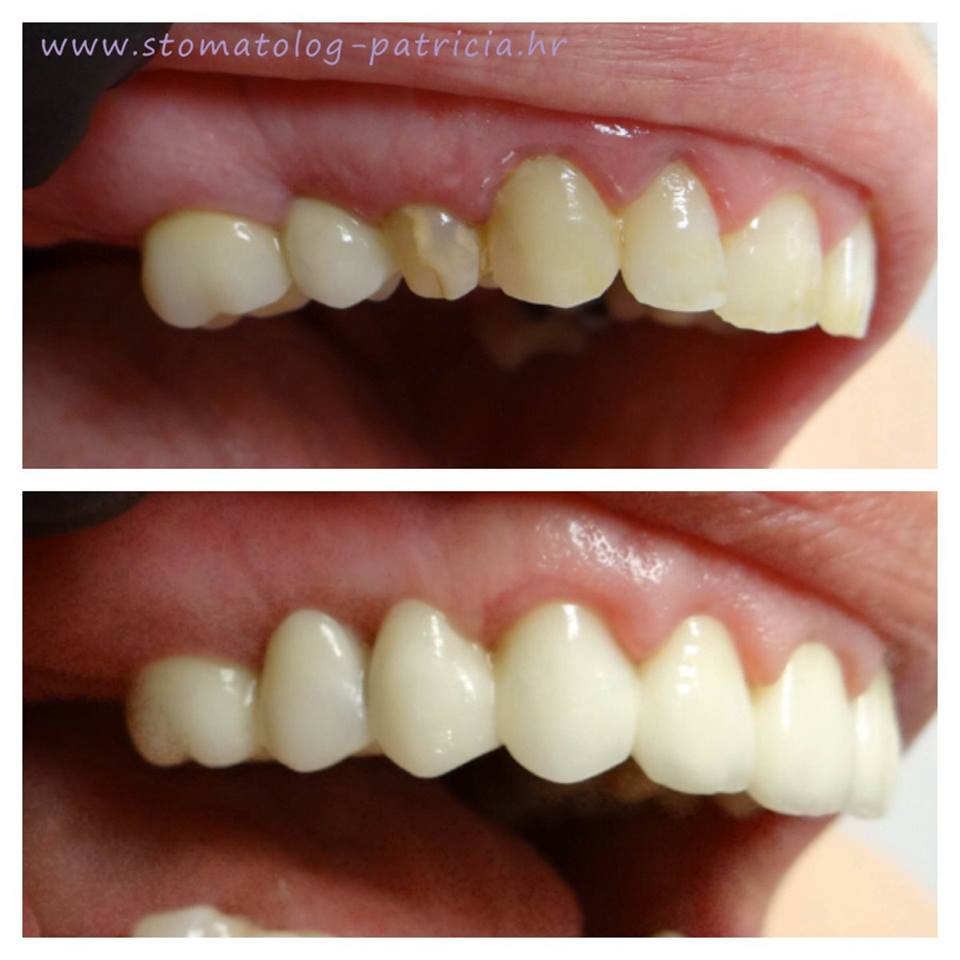
What are dental (tooth) bridges?
Dental bridges are fixed prosthetic restorations which are made when one or more teeth are missing.
When to opt for a dental bridge?
The main indication for a dental bridge restoration is one or more missing teeth. Only one missing tooth can lead to various problems in the oral cavity (adjacent teeth lean toward the toothless space in an attempt to close the gap and in this way they lose stability, bone pockets are formed, the tooth in the opposing jaw is also affected, trying to close the gap by protruding into the missing tooth space, there are changes in your bite which can also affect your jaw joints…) There should be contact between our teeth so that chewing forces can be transferred to all teeth equally. The most important thing is to restore the teeth of the masticatory unit (second premolar, first and second molar) because, due to their structure, they are able to withstand maximum chewing pressure. Losing these teeth causes the most serious functional, and thereby aesthetic problems.
How are dental bridges made?
Dental bridges are made in a dental laboratory from the impressions taken in a dental medicine office. They can be made from metal-ceramic (metal base) or non-metal ceramic (non-metal base, i.e. core).After the bridge is made in a dental laboratory, it is cemented over your prepared teeth, post and core build-up or dental implants.
Why do we prefer non-metal bridges?
Nowadays non-metal bridges are preferred to metal-ceramic ones due to their biocompatibility and aesthetic superiority. Non-metal restorations can also be made using computer technology (CAD/CAM) which gives high-precision results. Also, with non-metal bridges there are no ugly-looking black lines which can sometimes be seen in metal-ceramic bridgesat the crown margin where the metal shines through. Also, there are no signs of corrosion and metal particles release. There are many types of non-metal bridges (Emax, zirconia, ceramic) which differ according to their structure, features and manufacturing methods.
The procedure for making a dental bridge:
- After the initial examination and diagnostics to determine whether there are indications for a dental bridge, an arrangement is made about the future work and then a work plan, appointment schedule and production timeline are organised.
- The next step is drilling. In order to make a bridge, usually it is necessary to drill away two or more adjacent teeth which will function as anchors for the missing teeth. Dental implants can also anchor bridges.
- During the same visit, the dentist will take the impressions of the missing and adjacent teeth and the aesthetically acceptable provisional restoration bridge or crowns on anchor teeth will be made. The impressions are then sent to the dental lab where the dental bridge will be fabricated.
- During the next visit, the dentist will place the bridge to see whether it fits and needs adjustments, and if the patient is satisfied, the bridge is completed in the dental lab and cemented into place during the follow-up visit.
How long does it take to make a bridge and how many visits to the dental office are required?
The whole procedure of fabricating a dental bridge from drilling to cementing the finished bridge into place usually takes about 10 days, but if necessary itcan be done in 4-5 days.
During that period, 3-4 appointments are required.
What to think about before making a dental bridge?
Before you decide to get a dental bridge, especially in the aesthetic smile zone, we advise You to think about the desired colour of Your future dental work, as well as if You want to achieve a greater aesthetic transformation. This is important because it affects the decision on the number of teeth to be included in the prosthetic work and if the remaining teeth need to be whitened.
If you suffer from some form of bruxism (teeth grinding, jaw clenching…) it is important to inform your dentist about it before getting a dental bridge. Prior to cementation, it will be necessary to make a night guard or a splint (here you can find out more about splints) that will protect Your teeth and bridge from damaging.
What after the dental bridge procedure?
Immediately after cementation, it is not recommended to eat for an hour. When the anaesthetic wears off, You might feel soreness and thermal sensitivity (hot, cold) if the teeth abutments are vital. This sensitivity is normal and will disappear in 1-2 weeks. It is important to maintain proper oral hygiene. A soft brush is recommended which can be used to massage the gums without having to worry about damaging them. A few days after cementation we recommend You pay more attention to Your gums (using Gengigel is advisable). Also, where possible, use floss and / or an interdental brush. About a week after cementation, a check-up will be necessary which is extremely important to detect possible problems such as premature occlusal contacts when biting or sliding your teeth against each other, soft tissue response, persisting soreness and sensitivity, etc.
It is important to carefully follow the instructions given by Your dentist to make your bridge last longer.
What is the expected lifespan of a dental bridge?
Dental bridges last between 5-15 years provided that you carefully follow the instructions of Your doctor of dental medicine. It also depends on the biological factor of your tissue (it depends on the state of the anchor teeth, and the gum at the edge of the anchor teeth or the dental implant which is inevitably receding gradually over time). If you suffer from bruxism, make sure you wear mouth guards, avoid biting off and tearing hard food, do not bite nails, chew ice, pencils and other items. Maintain proper oral hygiene on a daily basis and schedule check-ups at your doctor of dental medicine every 6-12 months.
Why choose to make a dental bridge in OUR practice?
-
We have 17 years of experience in making dental bridges
-
We try to make you feel comfortable and relaxed in our practice, without any fear.
-
We respect your wishes relating to the health and beauty of your future smile and try to fulfil them completely.
-
Our goal is to make your smile functional and aesthetically perfect.
-
Your dental bridge will be produced in a renowned dental laboratory and will be of outstanding quality and aesthetics.
-
The work in your mouth will be painless and safe, we will do our best to make it as comfortable as possible and our service as good.
-
The price of your dental bridge will include the local anaesthetics, temporary crowns / bridges and a check-up.
-
Your „before and after“photos of the dental bridge will be preserved.
-
At any moment we are available to you for advice and consultation via mobile phone, e-mail and social media.
-
We try to keep our appointments.
- You can pay in cash, but also in interest free instalments: American Express up to 12 instalments, Diners up to 6 instalments, Erste & Steiermärkische bank Maestro and MasterCard up to 12 instalments.
- There is free parking in front of the practice.
If we meet your criteria, feel free to contact us and make an appointment.
If these pages do not provide you with an answer to your question on dental bridges, dental health and dental services, feel free to contact us.
We are at your disposal!
| Radno vrijeme
PON, SRI, PET 9:00-16:00
UTO, ČET 13:30-20:30
☎ +385(0)1 4822 137

